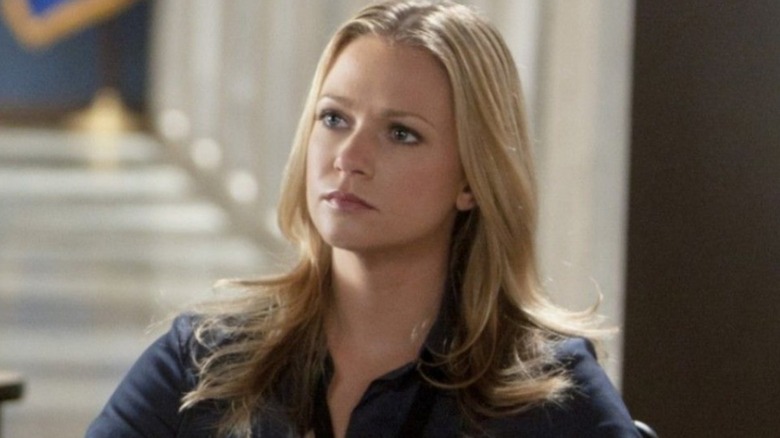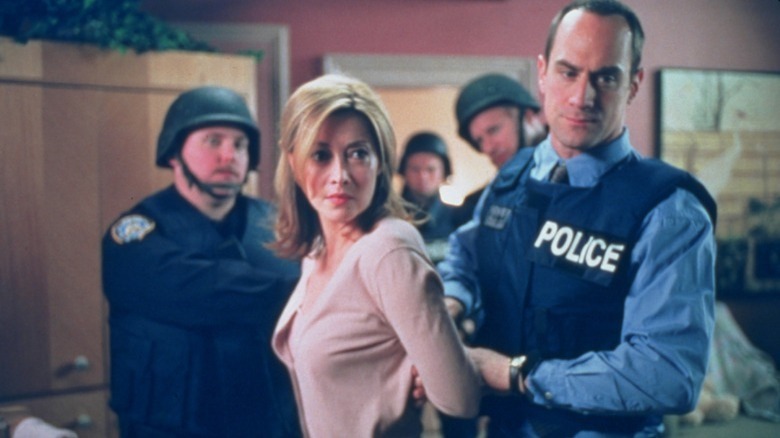The Biggest Similarity Between Criminal Minds And Law & Order
Crime shows! It's a multimillion-dollar industry, with as many variations as there are bugs crawling out of a dead body on "Bones." There are the civilian savant/ hardboiled detective duo shows ("Castle," "Lucifer," "Bones," "Monk"), the civilian savant/hardboiled detective duo ("Psych," "The Mentalist"), spooky variations ("Sleepy Hollow," "Evil," "Fringe"), and the ensemble of brave and true-hearted individuals forming unstoppable law enforcement teams. "Criminal Minds" and every "Law & Order" franchisee fall into this last category, along with your "CSI" and "NCIS" installments.
Besides falling into the same broad category, "Criminal Minds" and "Law & Order" are remarkably different shows. "Law & Order" follows the detectives and DA's office of New York City, from the discovery of a crime to the verdict on the criminal. "Criminal Minds" is on the federal level, with the BAU profiling and tracking down offenders of heinous crimes around the country. "Criminal Minds" always worked in more light-hearted, inter-office shenanigans into the plot and dug into the dramatic personal lives of its team, whereas Dick Wolf has always been more interested in the process behind crime-solving. But even with all those differences, the shows share one major, sobering similarity.
Criminal Minds and Law & Order fall into the same statistical mistake
"Criminal Minds" and "Law & Order" both fall into the trap that many crime shows do, overrepresenting white women as victims of violent crime and underrepresenting Black men. A statistical analysis shared by the Washington Post found that "Law & Order" skewed both victim and perpetrator stats in favor of white women: "About 50 percent of murder victims are Black, according to the FBI, but on "Law and Order" just over 10 percent of victims are Black."
The data skew is as pronounced on "Criminal Minds" as well. A grad student at the University of the Pacific did her thesis on the statistics of crime representation on that show, and found that women were victims of homicide 40 percent of the time on that show, the same amount as on "Law & Order." Yet women only make up 20 percent of victims in the 2017 FBI's Uniform Crime Report. Furthermore, none of the victims in her "Criminal Minds" sample were transgender, which grossly underrepresents that population's victimization in the real world.
The thesis also suggested that "Criminal Minds" could help contribute to a viewer's "mean-world syndrome." First hypothesized by media scholar George Gerbner, mean-world syndrome is the tendency for media consumers to perceive the world as more hostile and violent than it really is. Emma Berquist wrote for Gawker that our current crime obsession seems to be warping consumers' minds. "I see women on Twitter questioning whether it's safe to let a plumber into their house, or instructing others to rip out strands of hair to leave in cabs for DNA evidence in case the driver murders you," she wrote. "These are not sensible reactions, they are the thoughts of someone who has been deeply traumatized."

